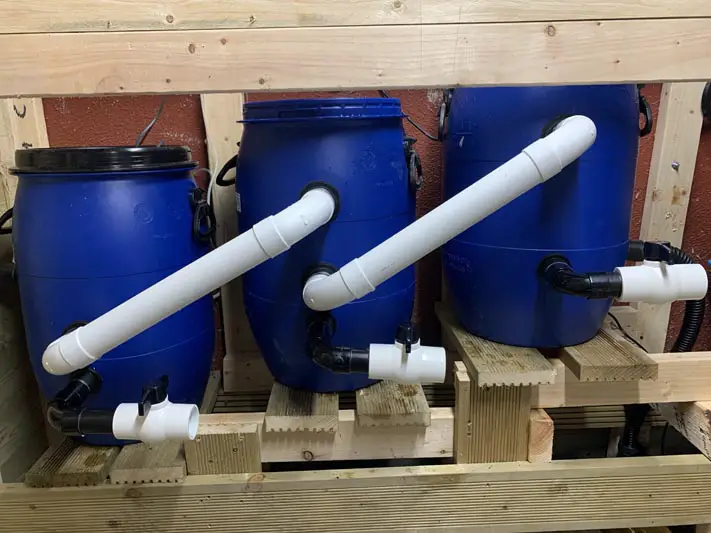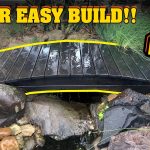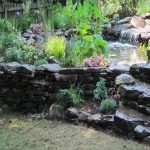How to Build a Pond Filtration System
If you are a pond owner, you understand the importance of maintaining a clean and healthy environment for your aquatic friends. A pond filtration system is essential for keeping the water clear, balanced, and free of harmful substances. In this guide, we will explore the steps to build a pond filtration system that will promote a thriving ecosystem and ensure the well-being of your pond inhabitants.
Choosing the Right Filtration System
The first step in building a pond filtration system is to select the appropriate type of filtration for your specific pond. There are three main types of pond filtration systems: mechanical, biological, and chemical. Mechanical filtration removes debris and particles from the water, biological filtration promotes the growth of beneficial bacteria that break down organic waste, and chemical filtration uses substances like activated carbon to remove impurities.
Before you begin building your pond filtration system, consider the size of your pond, the types of aquatic life it supports, and the specific water quality issues you are looking to address. Understanding these factors will help you choose the most suitable filtration system for your pond.
Gathering the Necessary Materials
Once you have determined the type of filtration system that best suits your pond, it’s time to gather the necessary materials. Here’s a list of basic materials you will need to build a pond filtration system:
– Filter housing or container
– Filter media (such as foam pads, filter floss, or bio-balls)
– Pump
– Tubing
– PVC pipes and fittings
– Sealant
– Drill and drill bits
– Utility knife
– Level
– Measuring tape
– Hose clamps
– Water testing kit
Designing the Filtration System Layout
Before assembling the filtration system, it’s essential to plan the layout to ensure optimal functionality. Start by determining the location of the filter housing or container. The filter housing should be placed near the edge of the pond for easy access and maintenance. Next, plan the placement of the pump, tubing, and any additional components based on the specific requirements of your pond and filtration system.
Installing the Filtration System
Once you have designed the layout, it’s time to start building the filtration system. Follow these steps to install the pond filtration system:
Step 1: Prepare the Filter Housing
If you are using a pre-made filter housing, ensure that it is clean and free of any debris or contaminants. If you are building a custom filter housing, make sure it is watertight and sturdy enough to withstand the outdoor elements.
Step 2: Install the Filter Media
Place the selected filter media, such as foam pads, filter floss, or bio-balls, inside the filter housing. The filter media will trap debris and provide a surface for beneficial bacteria to colonize, promoting biological filtration.
Step 3: Connect the Pump
Position the pump inside the pond and connect it to the filter housing using the tubing. Ensure that the pump is securely in place and the tubing is properly attached to prevent leaks.
Step 4: Set Up the Plumbing
If your filtration system requires additional plumbing, such as PVC pipes and fittings, carefully plan and install the plumbing to facilitate the flow of water between the pond, filter housing, and pump. Use sealant and hose clamps to secure the connections and prevent leaks.
Step 5: Test the System
Before fully operating the filtration system, conduct a thorough test to check for any leaks, malfunctions, or irregularities. Use a water testing kit to assess the water quality and ensure that the filtration system is functioning as intended.
Maintaining the Filtration System
Once your pond filtration system is up and running, it’s crucial to establish a regular maintenance routine to keep the system operating efficiently. Here are some essential maintenance tasks to include in your routine:
– Clean the filter media regularly to prevent clogging and maintain optimal filtration efficiency.
– Check the pump and tubing for any signs of damage or wear, and clean or replace them as needed.
– Monitor the water quality and make any necessary adjustments to the filtration system based on the test results.
– Inspect the filter housing for any debris or blockages, and clean or clear them to ensure uninterrupted water flow.
By following these maintenance practices, you can ensure that your pond filtration system continues to provide clean and healthy water for your aquatic inhabitants.
Benefits of a Well-Maintained Filtration System
A well-maintained pond filtration system offers a range of benefits for both the pond environment and its inhabitants. Some of the key advantages include:
– Clear water: A properly functioning filtration system will keep the water clear and free of visible debris, enhancing the visual appeal of the pond.
– Balanced ecosystem: Biological filtration promotes the growth of beneficial bacteria that break down organic waste, helping to maintain a healthy and balanced ecosystem.
– Improved water quality: By removing impurities and harmful substances, a pond filtration system contributes to better water quality, which is essential for the well-being of aquatic life.
– Reduced maintenance: An efficient filtration system can reduce the need for manual cleaning and maintenance, saving time and effort for pond owners.
Conclusion
Building a pond filtration system is a critical aspect of pond maintenance and essential for creating a healthy and thriving aquatic environment. By choosing the right filtration system, gathering the necessary materials, designing the layout, and following the installation and maintenance steps, pond owners can ensure that their filtration system functions optimally, promoting clear, balanced, and healthy water for their pond inhabitants. With proper care and maintenance, a well-built pond filtration system can contribute to the long-term success and enjoyment of a beautiful and vibrant pond ecosystem.





